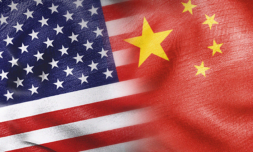In an age marked by rapid technological change and geopolitical uncertainty, the US-China S&T Agreement has been a beacon of collaboration, yet, its future lies in the balance.
The United States and China have witnessed a complex relationship characterized by various different elements. One of the cornerstones of their collaboration has been the S&T Agreement which has served as the foundation of the scientific and technological growth in both nations.
While the agreement has brought about significant advancements and commercial opportunities, its future hangs in the balance as geopolitical tensions between the two nations continue to rise.
For over four decades, the US-China Agreement on Cooperation in Science and Technology (S&T Agreement) was pivotal in bridging the scientific divide between both nations. Since 1949, after the creation of the People’s Republic of China, the US and China have experienced periods of tension and cooperation over various issues.
Hence, originally signed in 1979, the agreement has been the foundation for joint research projects and centers allowing knowledge to be shared interchangeably. After the PRC was established, China did not become a scientific power until the 1980s; following the agreement, its economy and scientific industry began to bloom.
The joint venture by both nations brought about several accomplishments such as the 1998 China-US nuclear cooperation agreement. In China’s once-opaque industry, the agreement made it possible to promote safety and transparency and paved the way for mutually beneficial collaborations within the umbrella of nuclear-powered items.
There have also been significant developments in renewable energy such as the US-China Clean Energy Research Center, which funds research on clean coal technologies and carbon capture and storage.
Companies from both nations have invested in each other’s energy projects boosting the economies and rapid growth in the renewable energy sector. From missions in space to preventing diseases, both nations have come far in collaborating on innovative solutions.
The benefits of the agreement may be immense, but the internal relations between both nations have offset this valuable partnership. The agreement was set to expire last August and in a surprising move, the US government only sought after the pact to be renewed for six months.
Nicholas Burns, the US Ambassador to China mentioned in mid-December that discussions with Beijing have begun to modernise the deal with prospects for a new agreement being uncertain. He went on to state that the current agreement, though it laid the foundation for the relationship between both nations, did not account for advances in rapidly growing industries such as AI, biotechnology, quantum mathematics, and more.
With recent tensions between the US and China continuing to escalate, the fate of the agreement is left hanging. The US’s biggest concern is that of its national security and has long expressed its concerns about sensitive technology transfer to China, especially in the form of quantum technology.




















